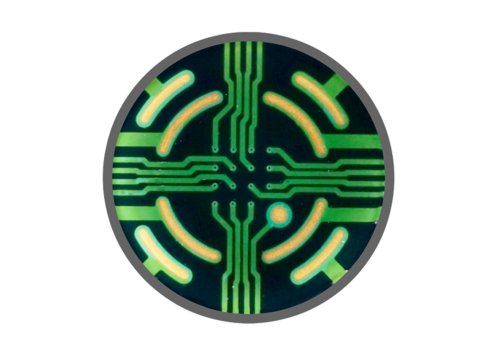HIGH-QUALITY RESULTS WITH INDUSTRY-LEADING THROUGHPUT
Multiwell MEA plates
BioCircuit microelectrode array (MEA) plates provide high-quality results together with industry-leading throughput at the lowest cost per well. Available in 24- well (16 electrodes/well) and 96-well (8 electrodes/ well) formats, BioCircuit MEA plates deliver low-noise signals and bring flexibility to your cellular analysis. Due to the non-invasive nature of MEA recordings, you can monitor cellular activity for days, weeks, or months.
Superior cell droplet placement
Plating cells in a small droplet centered over the electrode array will conserve cells and ensure robust electrical activity near the electrodes. BioCircuit MEA plates have on-plate spotting guides in the bottom of each well that confine the cell droplet over the recording electrodes. This enables more precise cell plating with less effort. Simply position the pipette between the AccuSpot features and release the droplet to ensure a perfectly centered, rounded droplet in every well.
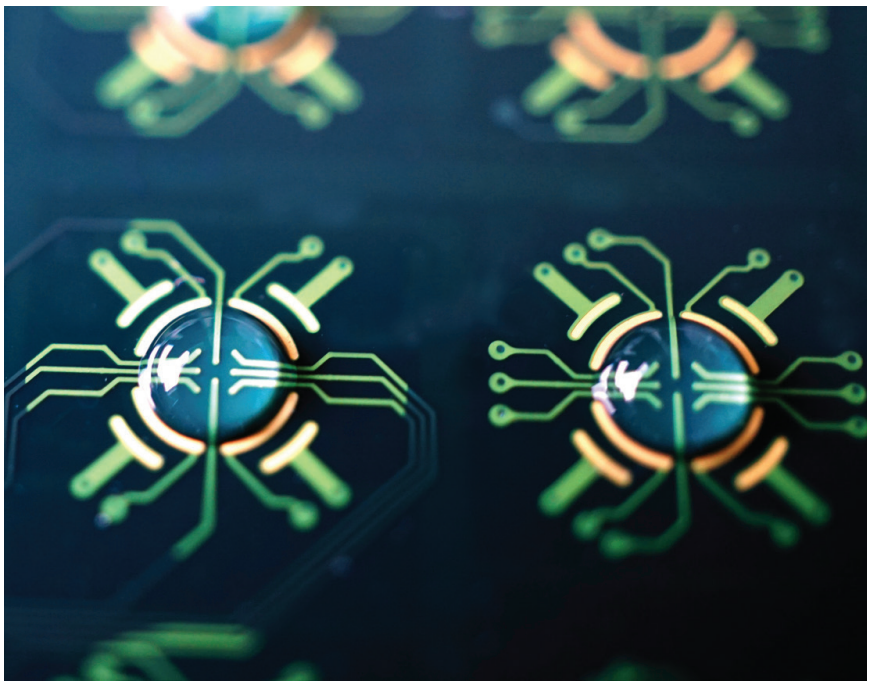
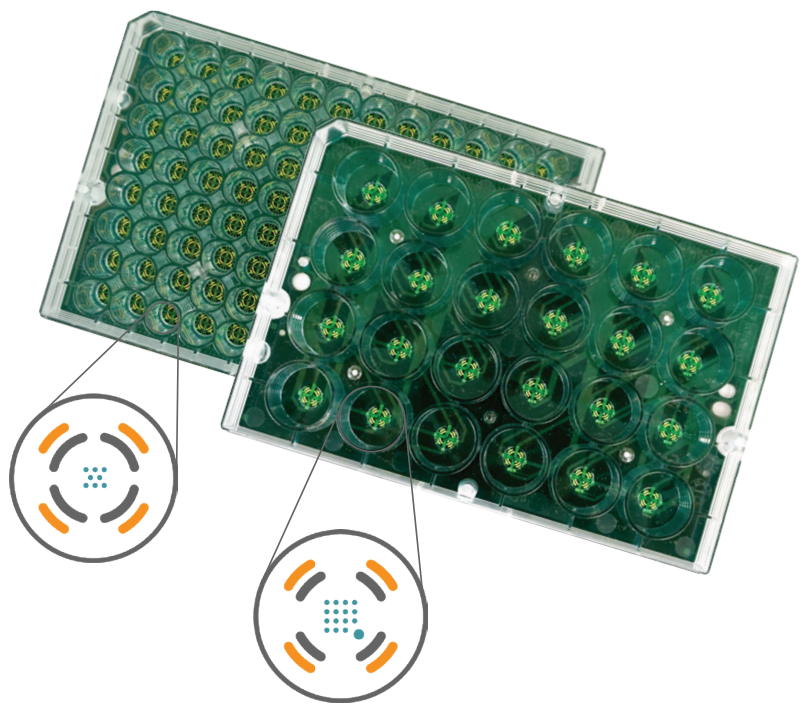
THE BIOCIRCUIT ADVANTAGE
- Industry-leading electrode count for detailed information from every well
- Accurate cell spotting every time
- Integrated, independent ground electrodes
- Conical shaped walls
- Evaporation-reducing lids
- Built-in humidity chambers
- Recording and stimulation capability for each electrode
HIGH QUALITY MEA DATA
All excitable cell types perform well on the BioCircuit MEA plates, showing excellent coverage across all wells and the high signal-to-noise ratio Axion customers expect. Track the development of electrical activity in stem cell-derived neurons or cardiomyocytes, study disease models, or examine the effects of compound treatment on excitable cells – the possibilities are endless with BioCircuit MEA plates.
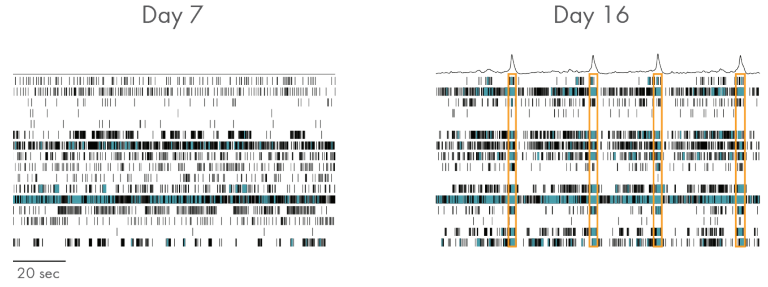

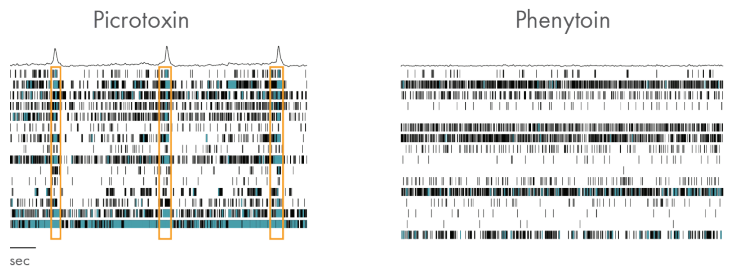

ENHANCE YOUR ASSAY WITH LEAP
To complement high-quality field potential signals recorded using BioCircuit MEA plates, Axion’s innovative Local Extracellular Action Potential (LEAP) assay allows you to record extracellular action potential waveforms from cardiomyocytes. LEAP signals enable quantification of action potential morphology and characterization of complex repolarization irregularities such as early afterdepolarizations (EADs).

